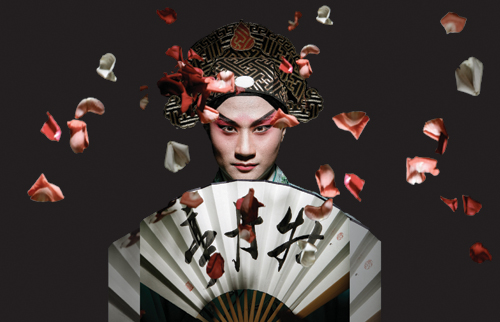|
 |
|
(FILE) |
The updated version of the 16th-century Kunqu Opera masterpiece Peony Pavilion will be performed in the Metropolitan Museum of Art's Astor Court in New York City from November 29 to December 2.
Peony Pavilion, one of the most important works of Kunqu Opera, was written by Tang Xianzu in the Ming Dynasty (1368–1644). The updated version is adapted by celebrated composer Tan Dun and co-produced by the museum and the U.S. China Cultural Institute (USCCI). It will be a highlight of the museum's eight-gallery exhibition, "Chinese Gardens: Pavilions, Studios, Retreats," now on view. By staging the Peony Pavilion in Astor Court, situated at the center of the exhibition galleries, the museum is seeking to introduce new ways of integrating fine arts with the performing arts as a way of further enriching the cultural experience of its audience.
This is the first time that an operatic performance has taken place in Astor Court—the first authentic Ming-style garden court constructed outside of China. Modeled on a courtyard in the Master of the Fishing Nets garden in Suzhou, east China's Jiangsu Province, the Astor Court was built by a team of 26 Chinese craftsmen 32 years ago. It represents one of the first cultural exchanges between the United States and China.
"This program is an example of the best of Chinese culture being presented in the most important U.S. cultural venues to American cultural audiences," said USCCI Chair Shirley Young, who has been working on many significant cultural exchange projects between China and U.S.
(Reporting from New York City)
Background
One of the most important works in China's opera history, Peony Pavilion was written by Tang Xianzu in Ming Dynasty (1368–1644). From then on, Kunqu Opera was often performed in gardens as part of Chinese garden culture. In 2001, Kunqu Opera was designated by UNESCO as "A Masterpiece of Oral and Intangible Heritage of Humanity."
This 70-minute version of the opera has been developed and directed by Tan Dun, with a new score by Tan and choreography by Huang Doudou, one of China's most prominent dancers. It will be performed by Zhang Jun, one of China's most respected Kunqu performers, and the Shanghai Zhang Jun Art Center Company.
A sweeping love story with subplots involving feudalism, the work in its original form consisted of 55 acts that take more than 20 hours to perform. This version, directed by Zhang Jun, remains faithful to the core plot focusing on the love story between the heroine and hero, Du Liniang and Liu Mengmei, and the pavilion where their love began. | 